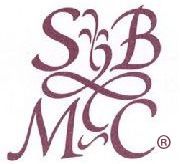Sally Balin Medical Center®
Dermatology and Ambulatory Surgery Center
Mohs Micrographic Surgery For Skin Cancer
Arthur K. Balin, MD PhD FACP
General Information About Skin Cancer Treatment &
MOHS Micrographic Surgery
Traditional methods of removing skin cancer include burning, freezing, and surgery. In all three methods, the dermatologist destroys or excises all visible cancer cells and surrounding normal tissue to ensure complete tumor removal. However, because cancerous cells are microscopic, some cancer cells are left behind, and the tumor recurs. Also, since excessive amounts of tissue are removed, the patient is left with a large unsightly scar. Due to these problems, Dr. Frederic Mohs invented a unique chemosurgical cancer removal procedure, which eliminates these problems. Mohs micrographic surgery, named after its creator, requires the surgeon to remove multiple thin, horizontal layers of cancerous tissue. Each layer is then carefully "mapped" using a microscope, so the cancer cells' exact locations are pinpointed, and then the surgeon completely removes the remaining cancer cells.
Experienced in Mohs Micrographic Surgery
Dr. Arthur K. Balin is one of about 400 U.S. physicians board certified to perform Mohs Micrographic Surgery. He performs 4- 8 Mohs operations a day and has been doing so for over 20 years. He is an expert in his field. As one patient said, "I appreciated the wonderful care and comfortable accommodations while undergoing the Mohs procedure. Dr. Balin and the RNs and staff are the nicest people."
Benefits of MOHS Micrographic Surgery
Of all skin cancer treatments, Mohs Micrographic Surgery:
- Provides the highest cure rate of up to 99% in new cancers and 95% in recurrent cancers.
- Has the lowest chance for cancer cell regrowth
- Causes minimal scarring or disfigurement
- Is a very precise means of removing all cancer cells without removing healthy tissue
Procedure
The surgical procedure's first step is removing the skin cancer's visible portion. Dr. Balin then removes a thin layer of tissue from the area where the tumor has been removed. He divides this specimen into sections and color codes each section with dye. Dr. Balin then makes reference marks on the skin to map where each color-coded section was removed. This map can then be used to locate any remaining cancer cells with great precision. Next, a histopathology technician processes the skin sample, and Dr. Balin examines the underside and edges of the tissue sample under a microscope. If he sees more cancer cells, Dr. Balin returns to the 'map' and removes another thin layer of tissue from the area where the cancer cells were found. This tissue is again examined microscopically for cancer cells. This layer-by-layer examination continues until every remaining cancer cell has been removed.
Repair/Reconstruction
The repair or reconstructive surgery is performed in our outpatient ambulatory surgical center, The Sally Balin Ambulatory Surgical Center, located in the same facility as the medical center. Dr. Arthur Balin performs the surgical repair the day following Mohs micrographic surgery.
Expectations
Mohs micrographic surgery is performed on an outpatient basis under local anesthesia. Because the surgery proceeds layer by layer, the length of the entire procedure can take time. It is best to count on taking the day off from work or usual activities. If you live nearby, you may be able to return home while the removed tissue is being examined. All candidates for Mohs micrographic surgery are invited to wait in the Mohs lounge set aside for their comfort. There, one can read from over 100 different magazines, watch television, rest, or even enjoy backgammon.
Mohs Articles
Click on any of the following for information regarding skin cancer and mohs.
- Mohs Surgery Informational Brochure
- Treatments for Skin Cancer: How do They Stack Up? (article by Dr. Arthur Balin from February 2001 issue of SKIN & AGING)
- Physician Battles Skin Cancer with Microsurgery (article on Dr. Arthur Balin and Mohs Surgery)
- Skin Cancer (Chapter 59 of Principles of Geriatric Medicine and Gerontology authored by Dr. Arthur Balin)
FAQ's
-
1. I have documented skin cancer and am interested in Mohs as a treatment option. Who can I talk to?
Dr. Balin would be happy to discuss this treatment option with you during a Mohs consultation. To schedule a consultation, please call 610-565-3300.
-
2. Why is Mohs superior to other skin cancer removal techniques?
Mohs Micrographic Surgery offers patients the best possible cure rates and cosmetic results by thoroughly removing the diseased tissue only, preserving any surrounding "healthy" tissue. There is no comparison to other treatments; Mohs surgery is in a class by itself.
-
3. How long does the procedure take?
The excision takes approximately 10 minutes; however, the procedure's duration depends on the skin cancer's location and size. While several stages may be required, the sectioning, marking, and microscopic analysis may take up to two hours for each stage alone.
-
4. Where is the procedure performed?
The procedure is performed on-site at The Sally Balin Medical Center. Our Mohs lounge, equipped with a kitchenette, vending machine, television, and reclining chairs, provides patients with a relaxing, comfortable environment. The repair is performed the following day on-site at The Sally Balin Ambulatory Surgical Center.
-
5. Will I scar?
While scarring is unavoidable, the Mohs technique offers minimal cosmetic disruption and the best cosmetic results.
We are here to help! Call our friendly medical staff at 610-565-3300 to schedule a consultation.
BROWSE OUR WEBSITE
CONTACT INFORMATION
PHONE:
EMAIL:
ADDRESS:
110 Chesley Drive, Media, Pennsylvania 19063
MEMBERSHIPS:
AAD, ABD, Crozer-Keystone, Maine Line Health, ACMS





